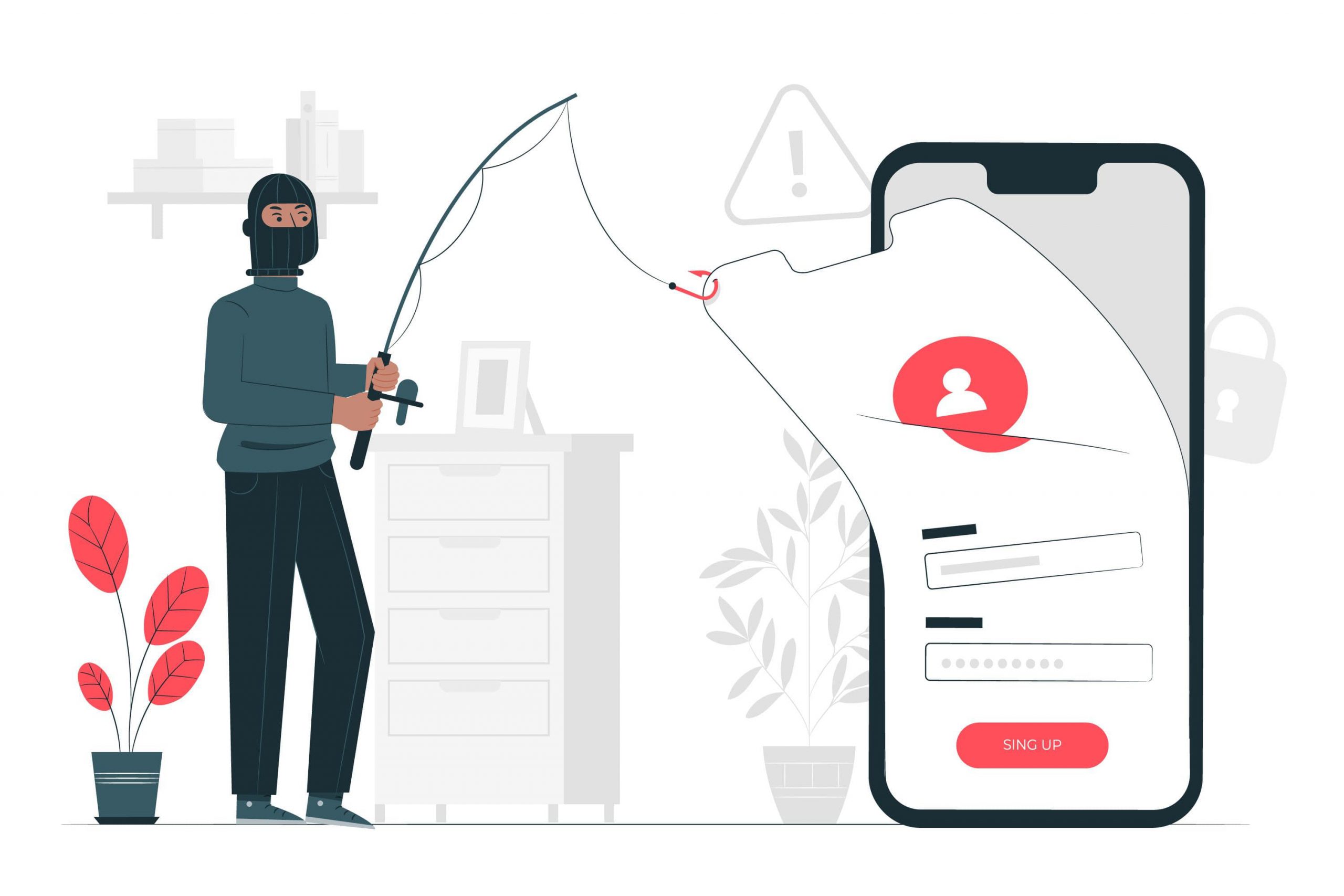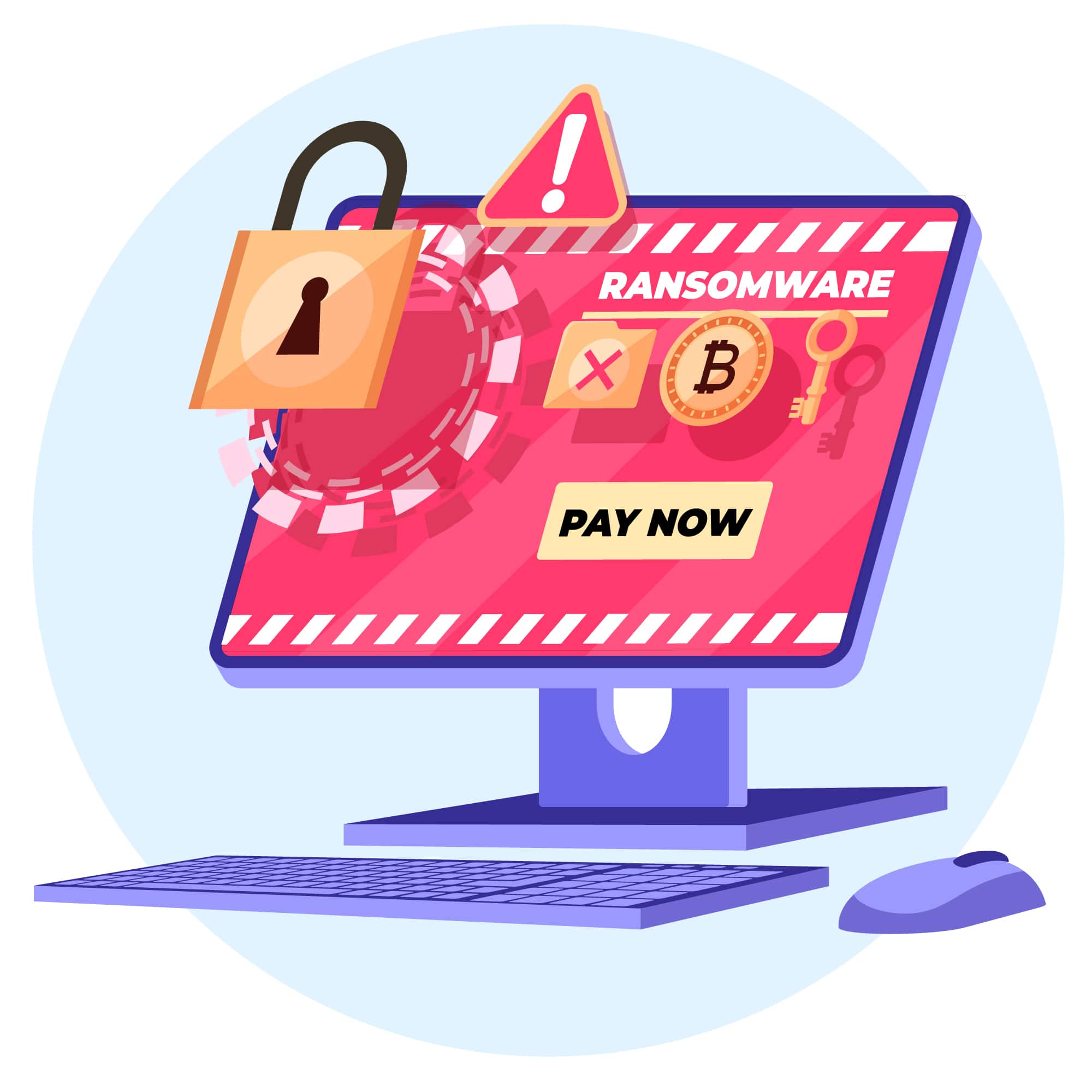Social engineering attacks like phishing and smishing persuade victims to divulge private information.
Phishing is the practice of sending emails containing harmful links or attachments. Smishing, which combines SMS and phishing, on the other hand, involves sending text messages with malicious links or a phone number that the target is instructed to call or click on, as appropriate.
Criminals threaten their potential victims with dire consequences if they don’t respond right away in both smishing and phishing attacks. In response to the threats, victims may wind up disclosing private information like passwords or bank account numbers.

Before comparing and contrasting smishing and phishing attacks, let’s first define each term.
What is Smishing
Smishing is an attack where criminals send text messages to potential mobile phone users that contain malicious links or phony phone numbers. It includes the use of persuasive text messages with manipulative content to coerce the recipient into responding.
The attacker might stress the importance of paying for a package that is currently in transit, verifying a financial transaction, paying an outstanding invoice right away, etc.
What is Phishing
Phishing is the practice of sending phony emails with malicious links or attachments that lead recipients to an attacker-controlled server or download malware capable of stealing confidential data.
In phishing, the attacker’s website may resemble a trustworthy website but will have a typographical error in the domain name. However, if it has a login field, they may be able to steal the victim’s username and password as they enter them while they think they are accessing a secure website.
Similarities Between Smishing and Phishing Attacks
Smishing and phishing attacks employ social engineering strategies to deceive unwary users into disclosing private or sensitive information. The two attack strategies are similar in the following ways.

- Each uses enticing language to alert their targets to potential risks if they do not act right away. For instance, they threaten to close the victim’s bank account or credit card, to cut off their phone or electricity, or to carry out other actions, like clicking a provided link, if they don’t comply.
- Contains malicious links that are managed by the attackers and have the potential to compromise the user’s device, steal login credentials or other sensitive information, or install malware or viruses.
- Urgency: Each of the attacks instills a sense of urgency and may use threats or warnings about unfavorable outcomes if the target does not act or respond right away.
- Deceiving: Both attacks deceive and control their victims by employing social engineering techniques. Attackers who use smishing and phishing frequently pose as reputable brands like Microsoft, Amazon, Google, and other well-known names. This gives the potential victims the impression that they are dealing with the specified organization or authority, leading them to respond or provide requested information.
- Same goal: The main goal of launching smishing or phishing attacks is to deceive the target into disclosing sensitive personal or business data, including login credentials, credit card or banking information, and more.
Differences Smishing vs Phishing Attacks
The key distinctions between smishing and phishing attacks are shown in the table below.
| Features | Smishing | Phishing |
| Attack Vector | Uses SMS text messages with shortened malicious URLs or a fake phone number. | Uses email with malicious links or attachments. |
| Medium | Phone or mobile device | Computer or mobile device that accesses email. |
| Reach and Impact | An average of 2,65 billion spam texts messages were sent and received per week April in 2022. The click rate of links in text messages is higher than those in emails. More users are likely to get compromised using smishing compared to phishing | About 3.4 billion phishing email messages are sent every day. However, the click rate is lower than that of smishing. |
| Delivery Mechanism | Text messages to a mobile phone | Email messages to computing devices |
| User Awareness | An average of 2,65 billion spam text messages were sent and received per week April in 2022. The click rate of links in text messages is higher than those in emails. More users are likely to get compromised using smishing compared to phishing | Most email users are aware of phishing attacks |
| Links | Shortened malicious links and fake numbers | Malicious links and attachments |
| Exploitation of Device | About 60% of mobile phone users are unaware of smishing attacks and are likely to fall victim. | May steal confidential information from a computer. The attackers may also use the compromised device to distribute malware or viruses to computers on the same network. |
| Urgency | Using a more urgent and compelling message requesting immediate response. | Urgent email but less than the smishing. |
How to Protect Yourself?
Some precautions against phishing and smishing are listed below.
- Use of strong email security solution: Install security tools that work, such as anti-virus software, robust firewalls, spam filters, link analysis programs, and others. These aid in the recognition of phishing emails and their delivery to users.
- Use multi-factor authentication (MFA): By requiring the user to provide additional authentication in addition to their password, the deployment of an MFA adds an extra layer of security. In order to use a typical MFA solution, the user must enter their username, password, and an additional authentication factor, such as a code that is sent to their mobile phone.
- Regularly update and patch operating systems and software applications: The operating system, applications, and security solutions should all be updated regularly to make sure they are current and running patches that fix the majority of vulnerabilities and flaws that hackers may try to exploit.
- Observe safe security practices: You still need to practice safe online practices even though installing an antivirus and other security solutions on your computer or mobile device can help detect and protect you against potential attacks. Knowing the old and new tricks that attackers employ can keep you safe. Additionally, discover how to look for social engineering red flags like misspellings, urgency, incorrect domain names, unknown senders, etc.

- Create security awareness: Businesses should regularly and adequately train their employees about phishing, smishing, and other cyber-attacks. Additionally, they need to test the knowledge and find and fix any gaps using phishing simulation tools. Additionally, users should inform their family and friends about spam messages and safe behavior.
- Report the attempted attack: Inform a company, like a bank or another institution, about the situation so that it can be secured. You could also alert the agency responsible for preventing fraud in your nation so that they can conduct more research.
- Test awareness using simulated phishing attempts:Administrators can assess employee awareness and how they would react to actual phishing attempts through the simulation tests. The simulation software typically sends phishing emails without dangerous links or attachments, but similar to what attackers would send. It enables the organization to determine whether the awareness training is effective and whether any gaps require filling.
- Protect sensitive information: Limiting who has access to the data and what they can do with it is a good practice in addition to using antivirus and encryption to protect sensitive data. Give users the least amount of access possible so they can only use the information and resources they need to complete their tasks. Even with unauthorized access, an attacker cannot do much damage.
- Ignore or delete any suspicious text or email. Do not click on links, attachments, or messages that seem suspicious. Additionally, avoid answering messages that ask you to send private information like your credit card number or bank account information.
What should I do if attacked?
Millions of fraudulent messages continue to evade spam and other security filters every day, despite efforts to identify and stop smishing and phishing messages from reaching their intended victims.
Sadly, the majority of users—even those who are aware of the scams—might still fall for the con and click on the dangerous links. While the best course of action is to ignore and steer clear of responding to phony SMS and email messages, it’s also wise to be prepared for attacks.
1. Determine how the attack occurred.
Discover the cause of the attack and whether your security solution needs to be improved to stop similar attacks from happening in the future.
2. Examine the impact of the attack.
Examine the phishing email to determine its purpose, the data the attacker was after, and its intention. To search for suspicious IP addresses and URLs, you can also use the firewall or logs of a similar nature. Examine any accounts and information that may have been compromised. Additionally, keep a close eye out for any suspicious activity in relation to your bank and online accounts, such as attempted logins from odd locations, money transfers, etc.
3. Notify the involved organization
It is best to get in touch with the legitimate business that has been affected and inform them that hackers are using their name to deceive customers. The knowledge enables the business to alert customers to potential scams.
4. Remove the gadget from the network
Disconnecting your phone or computer from the network will stop the malware or other installed software from uploading your sensitive data if it is infected. Additionally, it aids in network machine protection.
Disconnecting ensures that the device does not steal and upload sensitive data to the internet or the attacker’s machine, as well as preventing the malware from spreading to other computers on the network.
5. Clean your device
Clean the infected device with a trustworthy tool, and only reconnect it after it has been rendered damage-free. You might think about returning the system to a time when things were running smoothly, like a week before the attack. Change the PINs and passwords for the compromised accounts as well.
Conclusion
Smishing and phishing attacks can affect any person or business that uses computers or mobile devices. While phishing targets email users, smishing attacks frequently target users of mobile phones.
In either case, spammers employ social engineering strategies to deceive users into disclosing passwords, banking information, and other sensitive data. The majority of spam filters and other security measures can be disregarded by phishing and smishing emails and SMS texts. As a result, users may believe that the messages are trustworthy and legitimate as a result.
Data and identity theft can be prevented by being watchful and being knowledgeable about cybersecurity best practices. Users should become familiar with the warning signs of smishing and phishing attacks, which include urgency, unusual senders, requests for sensitive information, and more. When you begin to suspect an attack, disregard the message and check to see if the organization mentioned actually sent it.

Javier is Content Specialist and also .NET developer. He writes helpful guides and articles, assist with other marketing and .NET community work



